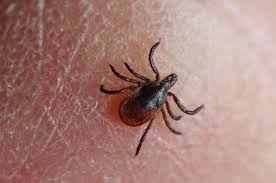Wisconsin News
Expert breaks down tick-borne illnesses in wake of northern Wisconsin fatality

Fatality in Bayfield from tick-borne illness highlights need for awareness and caution
The danger of tick-borne diseases in the Northwoods was driven home with the death last month of a Bayfield man, one of three people contracting the Powassan virus in Wisconsin this year as of last month.
“I’m concerned about Powassan because there’s no real blood test for it,” said Dr. James Thatcher of the Aspirus Tick-Borne Illness Center in Woodruff.
“It’s tricky because it’s similar to Lyme disease,” he continued. “It grows very slowly in the body and can take at least a week or more to get symptoms.”
Thatcher spoke with WPR’s Robin Washington on “Morning Edition” about how to immediately respond to a tick bite, as well as the nature of tick-borne diseases.
The following interview has been edited for brevity and clarity.
Robin Washington: How common are fatalities from tick bites, particularly in our region?
Dr. James Thatcher: Fatalities are pretty uncommon, especially for acute Lyme disease. We’re definitely more concerned with chronic tick-borne illnesses. But Powassan virus is somewhat rare. We’ve had a couple of cases in the clinic.
RW: If you get bitten by a tick or you notice ticks on you, what do you need to do immediately?
JT: Some of the viruses are fast-growing and some are slow-growing. When you find a tick on you, it’s very important how you remove it. My dad used to say burn them off with a match. Don’t do that! When you irritate the tick, you’re more likely to get infected. Also, old studies that showed that a tick had to be on you more than 24 hours were flawed. With the Powassan virus, the tick only has to be attached to you for 15 minutes.
You should use a buddy system and have someone check you for ticks, or if you’re alone, you can try a creative use of mirrors. To remove them, you want to grasp it with a set of tweezers, as close to the head as possible, and try to lift it up and out. If you pull it too far back, the head pops off. I’ve probably had about 50 tick-bite patients in the clinic this year, and maybe two dozen had a piece of the tick still stuck in there.
RW: My one encounter getting ticks on me was on Clough Island, between Duluth and Superior. I might have been wearing shorts, and I noticed ticks on my lower legs. I immediately brushed them off. I wasn’t bit, and I didn’t get sick. But should I still have sought medical attention?
JT: Some people do play the waiting game. We say that at about five to seven days in, if you’re not having symptoms, then you’re probably OK. But for the most part, I can tell you with good confidence that if you’re bitten by a tick, you’ve got about a 5-1 chance of getting Lyme disease. You should have some prophylaxis or prevention, like a good tick repellent.
RW: Do insect repellents work? And those for your pets?
JT: I find the HeartGard and NexGard that my vet recommends are pretty good. I tend to double-cover and put some on the top of the back of the dog in the summer.
For humans, most people use DEET or Off!. There’s a spray called Permethrin you can spray on your clothes. There’s ElimiTick gear that turkey hunters wear. But DEET or Off! are better than nothing. Mosquitoes and biting flies can also bring disease, and biting flies can sometimes bring something worse than Lyme disease, so I recommend you get something that covers for all three: biting flies, mosquitoes and ticks.
RW: I’m assuming there are many different species of ticks in our region.
JT: Most people know about the black-legged tick. There are wood ticks or dog ticks. You have the lone star tick up here. And there’s a newer tick that’s not on the Wisconsin maps yet. It’s called the Asian longhorned tick. When I moved here in June last year, my neighbor brought me over an Asian longhorned as a welcoming gift, and said, “Did you know these are here?”
Wisconsin Public Radio, © Copyright 2025, Board of Regents of the University of Wisconsin System and Wisconsin Educational Communications Board.


